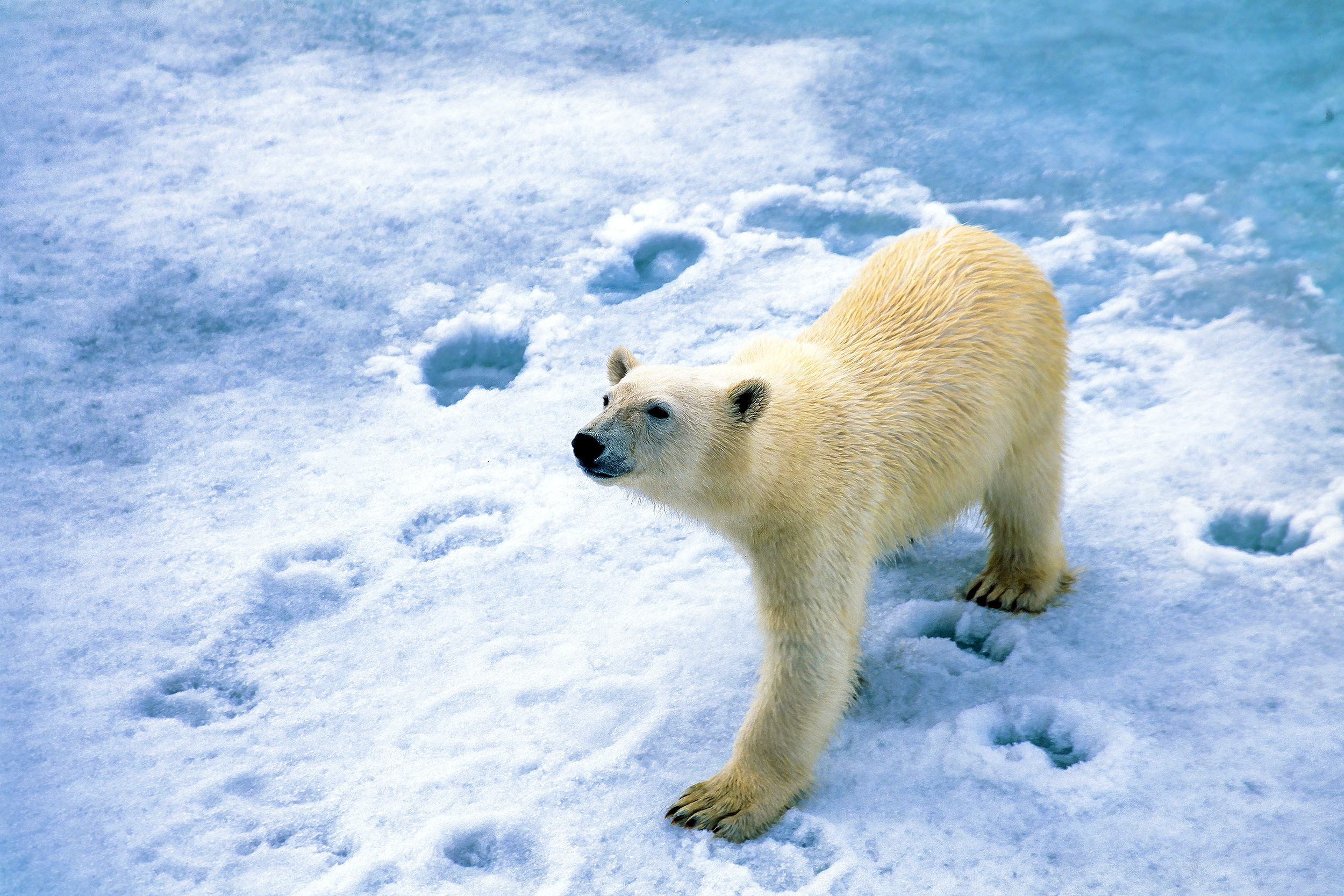
Polar bears, the majestic icons of the Arctic, are elusive and vulnerable, making their conservation a challenging task. However, a breakthrough in DNA analysis using skin cells shed in their footprints offers new hope for monitoring these endangered species.
This innovative method, developed by a team of international scientists, promises a less invasive and more efficient way to gather essential data on polar bear populations.
Dr. Melanie Lancaster of the World Wide Fund for Nature Global Arctic Programme is the senior author of the study. “It is particularly challenging, expensive, and time-consuming to find polar bears in the Arctic, let alone count them and understand how they are coping with climate change,” said Lancaster.
The difficulties in locating and counting these bears, combined with the need to understand their response to climate change, has left a gap in critical data regarding their population size and connectivity.
Inspired by forensic techniques suited for tiny, degraded DNA samples, the scientists developed a method that avoids the physical capture of bears. This method avoids an often stressful and dangerous situation for both the animals and humans. Elisabeth Kruger of the World Wildlife Fund, another author of the article, highlights the significance of this method.
“Many Inuit express concern about invasive research methods,” said Kruger. “People are concerned about the welfare of the individual polar bear and the health and safety of people who may harvest the bear later. This is one of the reasons we are so excited about new methods like this – the person collecting the sample never needs to even see or be seen by the polar bear.”
eDNA from animal tracks
A unique aspect of this research involves the use of environmental DNA (eDNA) found in the snow track footprints of polar bears. Dr. Micaela Hellström of MIX Research Sweden AB, the lead author of the study, explains that the tracks contain fresh cells with intact DNA.
“The tracks usually contain fresh cells, and the DNA is intact because of the cold ‘storage’ temperature. DNA that has passed the gut is much more degraded and therefore more challenging to work on,” said Hellström.
The team collected snow from individual tracks of Alaskan polar bears and Swedish Eurasian lynxes, both in the wild and captivity, as well as from a captive snow leopard. Confirming the accuracy of the genotypes derived from this snow track DNA, additional materials like hair, saliva, and mucus were also sampled.
The researchers sampled 24 wild polar bear tracks and 44 wild lynx tracks. They melted and filtered the snow from these tracks to collect environmental DNA, which they then analyzed using microsatellite analysis.
Despite the low concentrations of DNA in the tracks collected from the wild, they successfully retrieved nuclear DNA from 87.5% of the wild polar bear tracks and 59.1% of the wild lynx tracks. They managed to genotype 13 of the wild polar bear samples, identifying 12 different individuals.
When focusing on the lynx tracks sampled by trained personnel, the genotyping success rate improved significantly. The scientists retrieved nuclear DNA from 76% of the samples collected by these trained individuals, and they successfully genotyped 24% of these samples.
This non-invasive sampling technique, despite a lower success rate compared to traditional methods, offers considerable advantages. It not only reduces the stress and danger associated with physical capture but also allows for larger sample sizes due to its ease of collection.
Implications for conservation
The potential of this technique to inform conservation strategies, understand animal populations and behaviors, and manage human-animal conflicts is immense.
Dr. Lancaster expresses hope that this method will be adopted widely by the polar bear research community, involving hunters, volunteers, and Indigenous communities. She says, “We hope this method will be taken up by the polar bear research community, with the involvement of hunters, volunteers, and Indigenous communities, as a new way to collect information on polar bears.”
The team also anticipates the expansion of this technique to other animals living in snowy environments, having already demonstrated its effectiveness with lynx and snow leopards.
In summary, this groundbreaking research in DNA analysis using environmental DNA from snow tracks and footprints opens a new chapter in wildlife conservation. It promises a more humane, efficient, and inclusive approach to studying and protecting one of the Arctic’s most iconic inhabitants, the polar bear, and potentially other species in similar environments.
The full study was published in the journal Frontiers in Conservation Science.
—
Like what you read? Subscribe to our newsletter for engaging articles, exclusive content, and the latest updates.
—
Check us out on EarthSnap, a free app brought to you by Eric Ralls and Earth.com.
